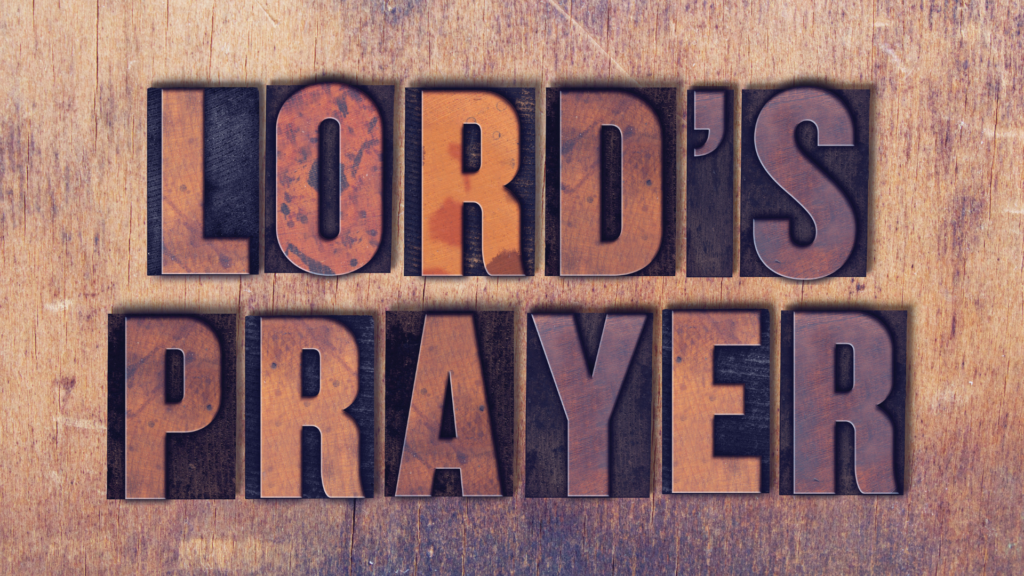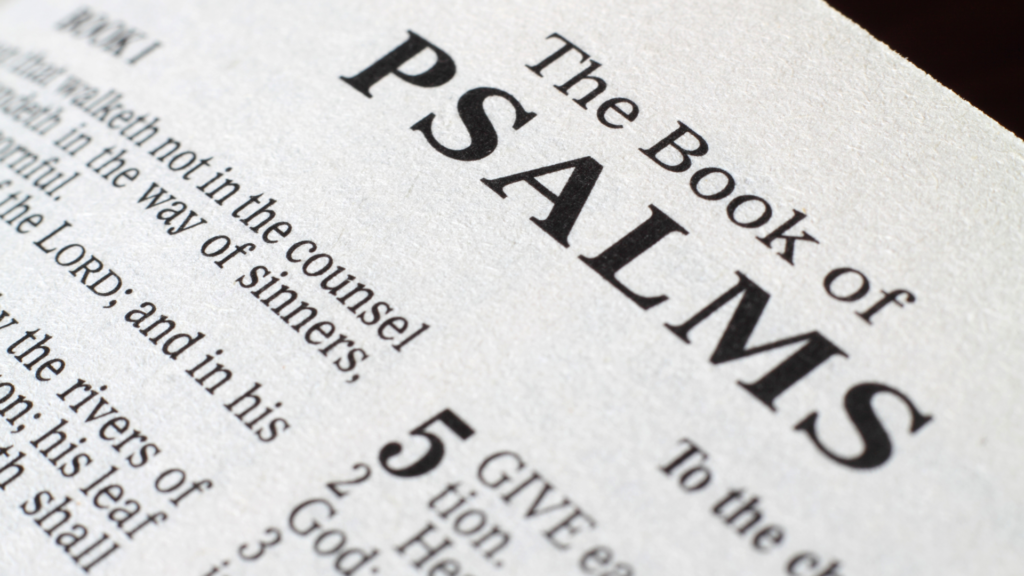Have you ever wondered if your prayers align with what the Bible teaches? I’ll delve into Scripture to help you understand how to pray according to the Bible in a way that resonates with God’s heart. Whether you’re new to prayer or a seasoned believer seeking to deepen your connection with God, this guide is designed for you.
How to pray according to the Bible: Biblical foundation

Prayer is a sacred pathway that connects us with God. But what does the Bible tell us about prayer? How does it shape our relationship with God and guide us on this spiritual journey? I’ll explore the foundation of prayer as outlined in the Bible.
Prayer as communication with God

Prayer is more than just a religious duty; it’s a channel of communication between you and your Heavenly Father. Just like you’d talk to a close friend or a family member, prayer allows you to converse with God—a privilege that demonstrates the depth of His love for you.
I remember a time when I felt distant from God. It was as if my prayers were hitting a wall. But as I immersed myself in the Word, I stumbled upon Psalm 145:18, which says, “The Lord is near to all who call on him, to all who call on him in truth.”
This verse made me realize that prayer is about being sincere and vulnerable before God and not about eloquent words.
Establishing a personal relationship

Think about it: the Creator desires a personal relationship with you. Through prayer, you can nurture this relationship by sharing your thoughts, dreams, fears, and joys. Just as you invest time and effort in your earthly relationships, so too should you invest in your relationship with God through prayer.
The Bible echoes this sentiment in Jeremiah 33:3: “Call to me and I will answer you and tell you great and unsearchable things you do not know.” This verse underscores the invitation to call on God, to engage in a dialogue that goes beyond the surface, revealing the depth of His wisdom and love.
Reflecting on God’s nature and attributes

Prayer is also a time to reflect on the nature of God. As you kneel in prayer, you can reflect on His infinite wisdom, boundless love, and unchanging character. This reflection not only deepens your understanding of God but also cultivates a heart of worship and reverence.
Psalm 19:1 says, “The heavens declare the glory of God; the skies proclaim the work of his hands.” In the same way, prayer becomes a canvas on which you can paint the inspiring portrait of God’s attributes.
As you do, you’re reminded of His greatness, and your concerns find their proper place in His plan. There was a season when I felt overwhelmed by life’s challenges. But during my prayer time, I meditated on Psalm 139:7-10, which beautifully illustrates God’s omnipresence.
This realization comforted me, knowing that no matter where I was, God was aware of my situation. By viewing prayer as a bridge between your heart and God’s, you’ll discover a sense of intimacy and purpose.
As you continue to explore Biblical prayer, remember every word you utter is an opportunity to draw closer to your Father.
What is the role of Jesus in prayer?

Jesus, the Son of God, walked among us and also demonstrated the importance of prayer through His life. His teachings and actions serve as a roadmap for us as we seek to navigate communicating with God.
Jesus as a model of prayer
Imagine walking alongside Jesus during His earthly ministry. Can you picture Him pausing to pray in the midst of crowds and making disciples? Jesus didn’t just preach about prayer; He lived it.
His actions portrayed the significance of maintaining a constant connection with the Father. I was struck by the story of Jesus’ prayer in the Garden of Gethsemane. His vulnerability in that moment, as He prayed before His impending crucifixion, revealed a depth of intimacy with God that I longed to experience.
It was as if Jesus invited me into that sacred moment, showing me that even in my most challenging times, prayer is my refuge.
Jesus’ teachings on prayer in the Bible

Jesus’ teachings on prayer are scattered throughout the Gospels. In Matthew 6:9-13, commonly known as the Lord’s Prayer, Jesus provides a template for prayer that contains adoration, surrender, and supplication.
This prayer isn’t just a rote recitation; it’s a model of how to approach God in humility and reverence.
In Matthew 7:7-8, Jesus emphasizes the power of persistence in prayer: “Ask and it will be given to you; seek and you will find; knock and the door will be opened to you. For everyone who asks receives; the one who seeks finds; and to the one who knocks, the door will be opened.”
These Scriptures teach us that prayer is an earnest pursuit of God’s Will and not a wish list. I once found myself grappling with an impossible situation. In my prayers, I clung to Jesus’ words about faith moving mountains (Matthew 17:20).
These words became a source of courage, reminding me that even when circumstances seemed insurmountable, faith-filled prayers could bring transformation. Through Jesus’ life and teachings, we learn that prayer isn’t a formal routine but a heartfelt conversation with the Father.
Just as He set an example of earnest supplication, vulnerability, and unwavering trust, you can follow His lead as you embark on your prayer journey. This way, you not only draw near to God but also walk in the footsteps of the One who paved the way for you.
How to prepare your heart for prayer

Before you begin praying, it’s essential to prepare your heart to create a space where your conversations with God can flourish. You can achieve that by:
Cultivating a humble and contrite spirit
Have you ever approached prayer with a heart full of pride or self-sufficiency? I know I have. But the Bible teaches us that true communion with God requires a humble and contrite spirit. Do these things to nurture a humble spirit:
Recognize human dependence on God
It’s easy to get caught up in the busyness of life and think you’ve got it all figured out. Yet, the reality is that we are limited, and our strength pales in comparison to the boundless power of God.
Psalm 8:4-5 reminds us of this humbling truth: “What is mankind that you are mindful of them, human beings that you care for them? You have made them a little lower than the angels and crowned them with glory and honor.”
There was a time when I faced a challenging decision that seemed beyond my capacity to handle. In my prayers, I found solace in surrendering to God’s wisdom, acknowledging that my understanding was limited compared to His infinite knowledge.
Confess your sins and repent

Before you can fully engage in meaningful conversation with God, it’s essential to address any barriers that might hinder your connection. Confession and repentance are integral to this process.
When you come before God with a contrite heart, admitting your shortcomings and seeking His forgiveness, you open the door to a deeper level of intimacy.
Psalm 51:17 captures this sentiment: “My sacrifice, O God, is a broken spirit; a broken and contrite heart you, God, will not despise.” These words remind us that God values a heart that acknowledges its need for His grace and mercy.
I remember a time when I harbored resentment toward someone. It wasn’t until I humbled myself before God, confessing my bitterness and seeking His help to forgive, that I felt a sense of freedom and reconciliation.
As you approach your time of prayer, remember humility isn’t weakness; it’s an acknowledgment of reality. You are created by a loving God, and your relationship with Him thrives when you approach Him with humility and a willingness to let go of your pride.
Through confession and repentance, you cleanse your heart, making space for deeper communion with your Father.
Creating a sacred space for prayer

Imagine walking into a room that’s adorned with symbols of your faith—where the outside noise fades away, and you’re enveloped in an atmosphere of tranquility and devotion. Implement these tips to create a space that enhances your connection with God:
Find a quiet and undistracted environment
In a fast-paced world, finding a quiet corner for prayer can seem challenging. However, Jesus Himself withdrew to solitary places to pray (Luke 5:16). A distraction-free space, can help you focus your thoughts and create an environment conducive to intimate conversation with God.
I transformed a corner of my room into a prayer nook. It was a place where I could escape the noise, and where the stillness allowed me to hear God’s voice. This simple act transformed my prayer life, making it feel more like a sacred dialogue rather than a rushed routine.
Use symbols and reminders of faith

Just as photographs on a wall trigger memories, symbols and reminders of faith can help center your mind during prayer. These symbols might include a cross or an inspiring Bible verse that encourages you. These physical cues can help set the tone for your time of prayer.
Psalm 119:105 beautifully captures the role of symbols and reminders: “Your word is a lamp for my feet, a light on my path.” Just as a lamp guides your steps, these symbols can guide your heart toward God.
Placing a small Bible on my prayer table became a routine that signaled the beginning of my prayer time. Opening that book invited God’s presence into my sacred space, making my prayers feel more purposeful and connected.
Creating a sacred space isn’t about elaborate decoration; it’s about intentionality. When you carve out a space where you can meet God without distractions and infuse it with symbols of your faith, you’re making a tangible statement about your desire to connect with Him.
The 4 most powerful prayers in the Bible

The Bible teaches us different ways to pray. I’ll uncover how to pray examples that reveal the depth and diversity of our connection with God. From the heartfelt cries of intercession to the melodies of thanksgiving and praise, let’s explore the different forms of prayer that the Bible invites us to embrace.
How to pray according to the Bible using the Lord’s Prayer
The Lord’s Prayer is a guide to crafting your prayers. It contains all the key elements of communication with God. When Jesus’ disciples asked Him to teach them how to pray, He gifted them with the Lord’s Prayer (a template) that continues to resonate across time.
Breaking down each element of the Lord’s Prayer

The Lord’s Prayer, found in Matthew 6:9-13, comprises several components that serve as building blocks for effective prayer. Let’s take a closer look:
“Our Father in heaven”: This opening phrase establishes the intimate yet reverent tone of the prayer. It acknowledges God as your Heavenly Father, a personal yet majestic figure.
“Hallowed be your name”: Here, you praise and exalt God’s name. It’s a reminder that your prayers aren’t just a list of requests but a declaration of God’s holiness.
“Your kingdom come, your will be done”: This segment aligns your desires with God’s divine plan. It’s an acknowledgment that God’s Will should take precedence over your own.
“Give us today our daily bread”: This is where you bring your needs and petitions before God. It’s a humble recognition that God is the ultimate provider.
“Forgive us our debts, as we also have forgiven our debtors”: Here, you confess your sins and seek forgiveness, while also committing to extending that forgiveness to others.
“Lead us not into temptation, but deliver us from the evil one”: In this final part, you ask for God’s guidance and protection, acknowledging your need for His strength to overcome challenges.
Understanding its significance and applicability

The Lord’s Prayer is a blueprint for a well-rounded conversation with God. Each element reflects a distinct facet of your relationship with Him—adoration, submission, dependence, confession, and more.
I remember a time when I was overwhelmed by worries. Praying through the Lord’s Prayer acted as a grounding force. With each phrase, I shifted my focus from my anxieties to the magnificence of God and His eternal purposes.
Matthew 6:9-13 isn’t just a passage to memorize; it’s a guide to internalize. It’s a framework that encourages you to balance your petitions with adoration, confession with submission. When you model your prayers after this template, you engage in a holistic dialogue with God.
Incorporating the Lord’s Prayer into your personal prayer life allows you to approach God with a rich and meaningful conversation—one that touches on the core aspects of your relationship with Him. The Lord’s Prayer isn’t just a formula; it’s an invitation to engage with God in a transformative way.
Intercessory prayer
Have you ever felt the urge to lift someone else’s burdens in your prayers? That’s the beauty of intercessory prayer—a powerful way to connect with God on behalf of others.
Praying on behalf of others

Intercession is like holding a friend’s hand as you both approach God’s throne. It’s a selfless act of love, a plea for God’s intervention in the lives of those you care about. When you intercede, you become a conduit between the earthly realm and the heavenly one.
There was a time when a close friend was facing a health crisis. I remember spending nights interceding on her behalf. It was as if my prayers formed a bridge, allowing her concerns to be carried to God. This experience taught me the importance of standing in the gap for others.
Examples of intercession in the Bible

The Bible contains examples of intercessory prayer, highlighting the impact it can have. One notable instance is found in Genesis 18:22-32, where Abraham pleads with God on behalf of Sodom and Gomorrah. Abraham’s bold intercession illustrates how your prayers can influence divine decisions.
Another example is seen in Job 42:10. After Job’s time of testing, God restored his fortunes when Job prayed for his friends. This showcases the power of intercession, not only for the recipient but also for the intercessor.
I recall a time when I prayed for a colleague who was going through a difficult season. It wasn’t just about asking God to change their circumstances; it was about inviting God’s comfort and guidance into their life.
The act of intercession reminded me of the privilege of being a channel of God’s grace. Intercessory prayer teaches you to look beyond your own concerns and extend your heart to others. By doing so, you emulate Christ’s example, who intercedes for you before the Father (Romans 8:34).
So, the next time you feel a tug on your heart to pray for someone else, remember that your prayers can be a lifeline, a source of hope, and a demonstration of God’s love in action.
Thanksgiving and praise

Have you ever felt your heart swell with gratitude, a desire to express your thanks for the countless blessings that surround you? Thanksgiving and praise is a form of prayer that turns your focus from your needs to God’s goodness. Here’s how to conduct this type of prayer:
Express gratitude for God’s blessings
Imagine sitting down to a feast of your favorite meal, prepared with love by someone who cares deeply for you. Thanksgiving and praise in prayer are like savoring each bite of that feast. It’s about acknowledging the incredible blessings that God has bestowed upon you.
I remember a time when I was overwhelmed with stress. It was during a moment of quiet reflection that I counted my blessings, and the weight on my shoulders lifted. Expressing gratitude in my prayers shifted my perspective from what I lacked to what I had been given.
Use Psalms and hymns in your prayer

The Book of Psalms contains poetic expressions of praise and thanksgiving. These verses can become a part of your prayers, allowing you to tap into the words of praise that have been offered to God for generations.
Psalm 100:4 emphasizes the importance of praise: “Enter his gates with thanksgiving and his courts with praise; give thanks to him and praise his name.” This verse invites you to approach God with singing and a grateful heart.
During a season of my life, I found myself humming a familiar hymn that I’d heard growing up. As I incorporated its lyrics into my prayers, I felt an indescribable sense of connection with God. The hymn helped me express my heart’s gratitude.
When you direct your attention to God’s goodness, you’re reminded of His blessings. So, the next time you pray, don’t forget to incorporate thanksgiving and praise. As you do, you’ll find that your perspective shifts, your heart is lifted, and your connection with God deepens in ways you could never imagine.
Supplication and petition

Supplication and petition is a form of prayer that invites you to lay your needs and desires before the One who cares deeply for you. Have you ever found yourself in a moment of vulnerability, pouring out your heart’s desires to God? Follow these tips to navigate this moment:
Present personal needs and desires before God
Supplication is like handing God a heartfelt letter, each word engraved with your hopes, fears, and dreams. It’s the act of bringing your specific requests before Him, knowing that He is interested in every detail of your life.
There was a time when I faced a crossroads in my career. I remember praying for guidance, asking God for clarity and direction. As I poured out my desires, I found comfort in knowing that God cared about my choices and had a plan for my life.
Balance personal requests with God’s Will

While it’s natural to present your personal needs and desires, it’s also vital to align them with God’s Will. The Bible reminds us that God’s plans are higher than our own, and His timing is perfect. Therefore, as you offer your petitions, do it with a heart open to His sovereign wisdom.
Jesus’ example in Luke 22:42 is profound: “Father, if you are willing, take this cup from me; yet not my will, but yours be done.” Here, Jesus models the delicate balance between voicing his desires and submitting to God’s plan.
I recall a time when I prayed for a specific outcome in a situation. However, as I spent time in prayer, I sensed a gentle nudge to release my grip on my desires and trust in God’s wisdom. Surrendering my will was difficult, but it led to a deep sense of peace.
Supplication and petition allows you to approach God with an open heart. As you express your needs and desires, you’re reminded that you have a loving Father who listens. Yet, by submitting these requests to His Will, you acknowledge His authority and embrace the possibility of unexpected outcomes.
How to develop a consistent prayer routine

A consistent prayer routine can nourish your spiritual life and deepen your connection with God. I’ll discuss the importance of setting regular times for prayer and strategies to overcome common challenges that might hinder your consistency.
Setting regular times for prayer
Just as you have regular meals to nourish your body, setting consistent times for prayer can nourish your soul and deepen your connection with God. Do the following things to help you establish a routine that helps you prioritize your spiritual well-being:
Find the perfect time: Morning, noon, or evening

Different times of day offer unique opportunities for prayer. Morning prayers can set a positive tone for the day, noon prayers provide moments of reflection, and evening prayers allow you to present your concerns to God before sleeping.
In Psalm 5:3 we read: “In the morning, Lord, you hear my voice; in the morning I lay my requests before you and wait expectantly.” This passage illustrates the hope and anticipation that morning prayers can bring.
I remember a season when I committed to starting my day with prayer. The habit of dedicating the first moments of my morning to God set a positive tone for the rest of the day. It was like having a spiritual compass that guided my actions and reactions.
Adjust to different life seasons

Life is dynamic, and your prayer routine should be adaptable to changing seasons. Just as you adjust your clothing based on the weather, you can adjust your prayer routine based on the demands of your life. Parenthood, career changes, and other life transitions might require flexibility in your prayer schedule.
Ecclesiastes 3:1 reminds us that there is a time and season for everything: “There is a time for everything, and a season for every activity under the heavens.” This verse encourages you to embrace the flow of life and adjust your routines accordingly.
During a busy period in my life, I found it challenging to maintain a consistent prayer routine. Instead of feeling guilty, I learned to offer up short prayers throughout the day, weaving moments of connection with God into my schedule.
Developing a consistent prayer routine isn’t about rigid rules but about creating an environment where your relationship with God can flourish. Whether you’re a morning person, a student or a working professional, finding the right rhythm for your prayer life is a personal journey.
How to overcome prayer challenges

Overcoming challenges in prayer is part of the journey. Have you ever sat down to pray, only to find your mind wandering to unrelated thoughts? You’re not alone. These challenges can actually lead you to deeper levels of connection with God.
Dealing with distractions and wandering thoughts
Distractions during prayer are common. Your to-do list, worries, and random thoughts can all demand your attention. However, it’s essential to remember that prayer isn’t about perfection; it’s about intention.
I remember a time when I struggled with persistent wandering thoughts during prayer. Instead of getting frustrated, I learned to redirect my focus back to God. I realized that acknowledging the distractions was the first step in overcoming them.
Strategies for maintaining focus and devotion

Maintaining focus during prayer requires practice and patience. One effective strategy is to start your prayer with a simple, sincere statement. By acknowledging your current state of mind, you create a bridge between your thoughts and God’s presence.
Another technique is to incorporate written prayers or Scripture into your routine. These can provide a solid foundation and help guide your thoughts. Psalm 119:15 highlights this truth: “I meditate on your precepts and consider your ways.”
During a season of restlessness in my prayer life, I began incorporating written prayers from a devotional book. These prayers became a springboard for my own conversations with God. It was as if these words paved the way for a deeper connection.
Embracing silence is another approach. Instead of filling every moment with words, take time to listen. Just as in any relationship, conversation involves speaking and listening. Psalm 46:10 encourages this practice: “Be still, and know that I am God.”
Overcoming challenges isn’t a sign of weakness but a testament to your determination to draw near to God. So, when distractions arise, remember that your efforts are not in vain. They’re shaping you into a more focused, attentive, and devoted Christian.
How to deepen your prayer life

Like most believers, you probably desire to draw closer to God. This desire finds its expression in prayer, an avenue that links you with your Creator. To reach new depths in your communion with God, implement:
Meditative prayer and Scripture
Meditative prayer is a practice that allows you to immerse yourself in Scripture, allowing them to shape your thoughts and conversations with God. Follow these steps:
Incorporate Scripture reading into prayer
The Bible isn’t just a collection of ancient words; it’s a living, breathing testimony of God’s character and love. By incorporating Scripture reading into your prayer routine, you infuse your conversations with divine wisdom and guidance.
I recall a season when I felt spiritually dry. It was during this time that I started meditating on Psalm 23 during my prayers. As I internalized its verses, my perspective shifted, and I felt a renewed connection with God’s presence.
Reflect on Biblical passages during prayer

Meditative prayer involves reading a passage of Scripture, allowing its words to wash over you. As you do, you reflect on the deeper meanings and implications of those verses. It’s like savoring a rich, multi-layered meal for your soul.
Psalm 1:2 highlights the importance of meditating on God’s Word: “But whose delight is in the law of the Lord, and who meditates on his law day and night.” This verse illustrates the impact that meditative reflection can have on your spiritual life.
There was a time when I felt overwhelmed by life’s challenges. Turning to the Book of Isaiah, I meditated on Isaiah 40:31. The imagery of soaring on wings like eagles reminded me of God’s strength, and this visual became a focal point in my prayers.
When you meditate on the words of the Bible, you open your heart to receive God’s insights and apply them to your life. As you engage in this practice, your prayer life will take on a new depth—one that invites you to not only speak to God but also listen to His voice in His Word.
Fasting and prayer

Have you ever considered fasting as a way to deepen your prayer life? Fasting isn’t just about abstaining from food; it’s a powerful practice that, when combined with prayer, can lead to spiritual growth and connection with God.
Biblical principles of fasting
Fasting is rooted in the Bible, with numerous examples of individuals seeking God through this discipline. It’s not about earning favor from God, but rather about humbling yourself, detaching from worldly distractions, and seeking God with a focused heart.
I once embarked on a short fast—a simple day of refraining from meals. This period of physical hunger became a constant reminder to turn my thoughts toward God, recognizing my dependence on Him for sustenance beyond just food.
Combining fasting with prayer for spiritual growth

The power of praying and fasting cannot be overemphasized. Fasting can be a catalyst for intensified prayer. As you set aside your regular routines and comforts, you create space for God’s presence to fill your life in a unique way.
Combining fasting with prayer deepens your connection with God and positions you to hear His voice more clearly.
In Matthew 4:1-2, Jesus’ 40-day fast in the wilderness illustrates this principle: “Then Jesus was led by the Spirit into the wilderness to be tempted by the devil. After fasting forty days and forty nights, he was hungry.” Keep in mind that fasting attracts intense spiritual battles but you don’t need to be afraid.
I once participated in a corporate fast with my church community. As we prayed together and set aside our normal activities, I found that my spiritual senses were heightened. It was as if the noise of the world grew quieter, and God’s voice became clearer.
Fasting and prayer create a sacred space where your hunger for food mirrors your hunger for God. It’s an intentional choice to draw closer to Him, allowing Him to satisfy the deepest longings of your soul.
If you feel led to incorporate fasting into your prayer life, remember that it’s a personal journey—one that should be approached with humility and a desire to seek God’s presence above all else.
Recognizing God’s responses to prayer

One of the most remarkable aspects of prayer is the dialogue it initiates between you and God. While your communication with God is often centered on your petitions and supplications, it’s equally essential to adapt to how He responds.
Different ways God answers prayer
Have you ever wondered how God responds to your prayers? Understanding God’s responses isn’t always straightforward, but it’s a journey that can deepen your faith and trust in His plans. Here are ways God answers prayers:
Yes, no, or wait: Understanding God’s Will
God’s answers to your prayers can be yes, no, or wait. While you might hope for an immediate “yes,” it’s important to remember that God’s perspective is bigger than yours. His answers are rooted in His perfect Will for your life.
I remember praying for a specific opportunity to come to fruition. When it didn’t happen, I felt disheartened. However, with time, I realized that God’s “no” led me to a path that I could never have foreseen—blessings beyond what I had initially asked for.
Discerning answers through circumstances and inner peace

Sometimes, God’s answers aren’t explicit words but discernible through circumstances and inner peace. When you’ve prayed about a decision or direction, pay attention to how circumstances unfold. Additionally, inner peace can serve as a compass, indicating God’s affirmation.
Philippians 4:7 highlights this inner peace: “And the peace of God, which transcends all understanding, will guard your hearts and your minds in Christ Jesus.” This verse shows God’s peace can be a confirmation of His answers.
There was a time when I faced a major life decision. As I prayed, I felt a sense of peace that defied my circumstances. This inner tranquility guided my choice and was a clear indicator of God’s direction.
Understanding God’s responses to prayer requires a willingness to submit your desires to His higher purposes. It’s about trusting that His plans are always for your good, even when they don’t align with your initial requests.
As you navigate the journey of recognizing God’s answers, remember your conversations with Him are never in vain. Just as a loving parent responds to their child’s requests, your Heavenly Father responds to you—with wisdom, love, and a deep desire to lead you toward His best for your life.
Testimonies of answered prayers

Have you ever experienced a moment when your prayers were answered in ways that left you in awe? Testimonies of answered prayers remind you that your Heavenly Father is actively involved in your life. Here is how to navigate answered prayers:
Share personal experiences of answered prayers
Personal stories of answered prayers are powerful reminders of God’s faithfulness. They’re the tangible evidence that your petitions don’t fall on deaf ears. Sharing these stories brings glory to God and also encourages others who may be going through similar struggles.
I remember a time when I prayed for a friend’s healing from a serious illness. The doctors had been uncertain about the outcome, but over time, my friend’s health improved. This experience deepened my faith and showed me that God’s healing touch is real.
Encourage others through testimonies

When you share your testimonies of answered prayers, you become a vessel of hope for those who are facing challenges. It’s like passing on a torch of faith, lighting the way for others who might be in the midst of their trials.
Psalm 107:2 says, “Let the redeemed of the Lord tell their story—those he redeemed from the hand of the foe.” This verse invites you to share the stories of God’s redemption in your life.
I once shared my experience of a job change that seemed daunting at first. Through prayer, I found peace and direction that led me to a new opportunity that exceeded my expectations. Sharing this story with a friend going through a career transition inspired her to trust God’s guidance as well.
Testimonies of answered prayers remind us that we’re part of a community where God’s faithfulness is evident. As you reflect on your experiences and share them with others, you contribute to a culture of encouragement and trust in God’s providence.
So, don’t hesitate to share the moments when God showed up in your life. Your story might just be the glimmer of hope that someone needs to hold on to.
How to overcome common prayer pitfalls

Sometimes prayer can be met with challenges and pitfalls. Discover how to transform pitfalls into stepping stones toward a more vibrant prayer life.
Avoid repetitive prayer
Have you ever caught yourself reciting prayers, the words flowing mechanically rather than from the depths of your heart? It’s easy to fall into the trap of repetitive prayer, but there are ways to break free and infuse your prayers with authenticity.
Emphasize sincerity and authenticity
Prayer is more than a checklist of words—it’s a conversation with the Creator of the universe. Emphasizing sincerity means speaking to God with your true thoughts, feelings, and desires. It’s about coming as you are, without pretense.
I remember a time when my prayers felt scripted, lacking the genuine connection I longed for. One day, I decided to simply talk to God as I would to a trusted friend. The experience was transformative; it felt like I was unburdening my heart to someone who truly cared.
Break free from empty traditions

While traditions can add depth to your faith, they can also become empty routines devoid of meaning.
Jesus spoke about this in Matthew 6:7-8: “And when you pray, do not keep on babbling like pagans, for they think they will be heard because of their many words. Do not be like them, for your Father knows what you need before you ask him.”
Breaking free from empty traditions means examining your motives and heart posture. Are you praying to be seen by others, or are you seeking an authentic connection with God?
I used to feel compelled to use eloquent words in public prayers, worried about how others perceived my spirituality. But as I grew in my faith, I realized that God isn’t impressed by eloquence; He values a humble and sincere heart.
Genuine prayer is like opening a door to your heart and inviting God in. It’s not about impressive words or rigid routines; it’s about vulnerability and honesty. As you navigate your prayer life, remember that God desires a relationship, not religious performances.
So, when you find yourself slipping into repetitive patterns, take a moment to recenter your focus. Remind yourself that God knows your heart even before you utter a word, and He welcomes your genuine, unfiltered conversations.
Guard against self-centered prayers

Have you ever found your prayers focused on your own wants and needs? While it’s natural to bring your concerns to God, here’s how to avoid dwelling on self-centered prayers:
Balance personal needs with broader spiritual concerns
It’s acceptable to bring your personal needs before God; after all, He cares about every aspect of your life. However, if your prayers only revolve around your own circumstances, you might be missing out on the bigger picture of God’s work in the world.
I recall a time when I was consumed by a particular problem. Every prayer seemed centered on that issue. But one day, I read about a global crisis and felt convicted to broaden my prayers. As I prayed for others’ needs, my perspective shifted, and I realized the importance of interceding for the world around me.
Align your desires with God’s greater plan

As you pray, remember that your desires should align with God’s greater plan for His creation. Jesus’ example in the Garden of Gethsemane illustrates this beautifully. In Luke 22:42, Jesus prays, “Father, if you are willing, take this cup from me; yet not my will, but yours be done.”
Aligning your desires with God’s Will means surrendering your wishes to His sovereign wisdom. It’s a recognition that His ways are higher and His perspective is beyond your understanding.
I once prayed for a specific opportunity. Yet, as I took time to listen and seek God’s Will, I felt a shift. It was as if God was redirecting my focus to a different path—one that aligned with His purposes.
Guarding against self-centered prayers doesn’t mean neglecting your own needs. It means expanding your vision to include the needs of others and the world around you. As you pray, invite God to shape your desires and reveal His greater plan.
Let your conversations with God be a blend of personal communion and intercession for the needs of humanity. Remember, God’s love extends far beyond your life, and your prayers have the power to touch not only your heart but also the world.
FAQs
How do you start prayer according to the Bible?
Begin with reverence and address God.
What are the 5 steps to prayer?
Adoration, confession, thanksgiving, supplication, amen.
How do I begin a prayer?
Open with praise and address God.
How do I properly pray to God?
Approach God with humility and sincerity.
What is the most effective way to pray?
Pray with faith, sincerity, and a pure heart.
How does Jesus say we should pray?
The Lord’s Prayer is a model (Matthew 6:9-13).
What is the difference between praying to God and praying to Jesus?
Christians often pray to God the Father through Jesus, the Son.
Cultivate a vibrant prayer life
I hope you now know how to pray according to the Bible. Just as any relationship requires time, effort, and open communication, your relationship with God thrives through prayer. It’s the key that opens the door to a deeper understanding of God’s character, His Will, and His love for you.

I’m a devoted follower of Christ on a journey to share the profound love, faith, and hope found in our Savior. Through my writings, I aim to inspire, uplift, and encourage fellow believers as we walk together in God’s light. Join me in exploring the beauty of faith and discovering the richness of a life rooted in Christ. Want to connect with me? Follow me on Facebook and YouTube.




